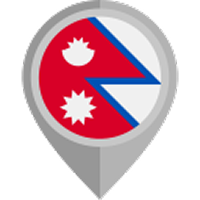Nepal vision | 27/02/2025
Whenever trekkers hear about the Manaslu Circuit Trek, they envision an untouched Himalayan paradise nestled along the Nepal-Tibetan border in the shadow of the mighty Mt. Manaslu (8,163m). The remote trail offers a raw and authentic adventure, weaving through some of the most breathtaking and mystical landscapes in the Himalayas.
Despite its remoteness, the Manaslu Circuit is rapidly gaining popularity as one of Nepal’s classic trekking routes. Along the way, you’ll navigate rugged trails, cross suspension bridges over roaring rivers, greet friendly locals in traditional villages, and marvel at cascading waterfalls, grazing yaks, and fluttering prayer flags.
The trek rewards you with panoramic views of Annapurna, Annapurna II, Ganesh Himal, Himalchuli, Ngadi Chuli, Shringi, Langpo, Saula, Tilicho Peak, Larkya La Peak, and, of course, Manaslu itself.
If this has sparked your adventurous spirit, then the Manaslu Circuit Trek is your next great Himalayan escape. But before you lace up your boots and hit the trail, there are a few essential things to know. That’s why we’ve put together this comprehensive guide to everything you need to plan and embark on this unforgettable journey.
Manaslu Circuit Trek Overview
The next best alternative for trekkers who want to explore the natural and cultural heritages of remote regions is the Manaslu Circuit Trek. It offers a wild and remote trekking experience with the option to have a different encounter in your 2-week journey. When we say a different encounter, we mean you wake up observing something new, as the lower, mid, and upper Manaslu regions are distinct.
The official trek starts with a walk from Jagat, reaching Namrung, a subtropical region. As you ascend to Sama Gaon, passing through fluttering chortens and spinning prayer wheels, you enter the mid-Manaslu tropical region. From here, get ready for the alluring side trips to Manaslu Base Camp, Pungen Gompa, and Rui La Pass. Now comes the finale: the upper Manalsu region, a desert-like landscape in the mountainous area.
Trust us; it is quite a sight as you make your way from Birendra Lake to the Larkya La Pass. The landscape transforms from desert to snow-covered glacier, increasing your thrill and adrenaline.
Moreover, if you seek an adventure into Buddhist culture and heritage preserved for generations, then the sacred Tsum Valley is your call.
Aside from that, the encounter with endangered species and the diverse flora and fauna of Manaslu and Annapurna Conservation Area, the rush of crossing the higher Larkya La Pass, and the magnificent side trips there is a lot to offer.
Highlights of Manaslu Circuit Trek
- Encounter the varied ecosystems in the Manaslu and Annapurna Conservation Areas, home to wildlife like snow leopards, Himalayan tahr, red pandas, musk deer, blue sheep, Himalayan monals, Tibetan wolves, golden eagles, and common leopards.
- Immerse yourself in the ancient Tibetan way of life, especially in the sacred Tsum Valley, with its mystical monasteries and timeless cultural practices.
- Dive deep into the spiritual heart of the region, visiting serene monasteries like Pungen Gompa and Mu Gompa, where ancient traditions and peaceful atmospheres prevail.
- Take the chance to go on awe-inspiring detours to Manaslu Base Camp, Pungen Gompa, and the remote Rui La Pass,

How difficult is the Manaslu Circuit trek?
The Manaslu Circuit Trek is challenging because it passes through the remote and diverse Manaslu region. Different factors influence the difficulty of the trek.
Altitude
The Manaslu Circuit Trek takes you to an elevation of 4000m and above. The oxygen level starts to reduce at 3000 m, so there is a high risk of Altitude Sickness (AMS) at even higher elevations.
Shortness of breath, headache, vomiting, nausea and dizziness are the initial symptoms. However, if the initial conditions are not addressed promptly, AMS can worsen with the serious complication of high-altitude cerebral edema (HACE) and high-altitude pulmonary edema (HAPE).
The best way to prevent this is to acclimatize at elevation after crossing 3000m on the trail. You will have a chance to stay in the beautiful village of Samdo, where you will be taken on different side trips. Your extra day is dedicated to exploring the gems of the Manaslu trek region.
Likewise, you should be hydrated, eat clean, avoid overexertion, and be prepared to descend if symptoms appear.
Difficult Terrain and Length of Trek:
With the diverse terrain, you can expect to encounter a variety of rocky and uneven landscapes throughout the trail. The rugged part with the requirement to navigate the steep ascents and descents, rocky paths, and loose gravel in some sections. Besides, in some parts, you can pass narrow paths, and it is impossible to cross them in the rainy season.
Throughout the trek, you'll cross multiple suspension bridges over rushing rivers. It can be fun and nerve-wracking at the same time.
Spending two weeks in such a strenuous landscape is quite a physical challenge, requiring good stamina and physical fitness.
Remote Location
The Manaslu Base Camp trek is among the restricted trekking zones, describing the remoteness of the region. The isolated villages and ancient monasteries with limited access to infrastructure are exciting. But you have to be ready, as there is a lack of access to emergency services and even basic accommodation in some parts.
The food options are limited, and it's important to carry essential supplies such as medications, snacks, and water purifiers to ensure your well-being throughout the trek. Due to the remoteness, trekkers need to be well-prepared, as access to help, supplies, and resources is limited.
How to Prepare for the Manaslu Circuit Trek:
By understanding the challenges and with the right amount of planning and preparation, both beginners and experienced trekkers can be part of a wonderful Manalsu trekking trip.
Physical Fitness
To tackle the physical challenge, you have to build stamina and endurance; thus, start with a light walk and go out on a hike with a weighted backpack. Further, increase the training by including cardio and strength training in your workout.
Stair climbing, running, and cycling are ideal for cardio and for strength for squats, lunges, and step-ups. You can consult with your trainer for your workout routine for better results. If possible, train at higher altitudes to allow your body to adjust to the thinner air. If this isn’t feasible, try exercising in a controlled environment using a high-altitude simulation mask to help your body cope with less oxygen level.
Mental Preparation
When it comes to mental preparation, try to stay calm and pace yourself during the Manaslu Trek. Take time for breaks, drink plenty of water, and maintain a steady pace.
Mentally prepare to take breaks throughout your trek, to sit back, relax, and enjoy the beautiful surroundings. Don't rush the experience; take time to appreciate the stunning views and the culture of the regions you pass through.
Similarly, conditions in the mountains can be unpredictable, with sudden weather changes and sometimes trail closures. A positive attitude toward handling these unwanted difficulties requires being flexible and ready for changes in your itinerary.
Permits
To preserve the unique and remote beauty of the Manaslu Circuit, the government of Nepal has declared it a restricted area, meaning trekkers must obtain specific permits. Here are the required trekking permits:
- Manaslu Restricted Area Permit (MRAP):
- Available from Nepal Immigration in Kathmandu and Pokhara.
- Cost:
- 100 USD for the first seven days (September to November), plus 15 USD for each additional day.
- 75 USD for the first seven days (December to August), plus 10 USD per additional day.
- Requirements: A minimum of two trekkers and a licensed guide are required to obtain the MRAP.
- Manaslu Conservation Area Project (MCAP):
- Cost: 3000 Nepali rupees per person.
- Can be obtained from the Tourism Board in Kathmandu and Pokhara.
- Annapurna Conservation Area Project (ACAP):
- Cost: 3000 Nepali rupees per person.
- Available from the Tourism Board in Kathmandu and Pokhara.

Gear and Clothing
- Clothing: Thermal Base Layers, Waterproof Jacket, Insulated Jacket, Gloves, Hat/Cap, Gaiters, Rain Poncho, Trekking Boots
- Accessories: Backpack, Sleeping Bag, Trekking Poles, Sunglasses, Camera/Phone, Headlamp/Flashlight, Water Bottle
- Health & Safety: Water Purification Tablets, First Aid Kit, Personal Identification (Passport)
- Navigation & Snacks: Trekking Map or GPS, Snacks & Energy Bars
To wrap up, the Manaslu Circuit Trek is an unparalleled adventure with a chance to explore some of Nepal’s most untouched and remote landscapes. From stunning mountain views and diverse wildlife to rich cultural heritage and spiritual experiences, the trek promises to be a journey of a lifetime. However, due to its challenging terrain, high-altitude passes, and remote location, it’s essential to come prepared physically, mentally, and logistically to make the most of this incredible experience.
Ready to take on the Manaslu Circuit Trek? Join Nepal Vision Trek for expert guidance, a well-planned itinerary, and a hassle-free trekking experience
FAQS









